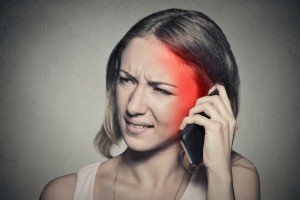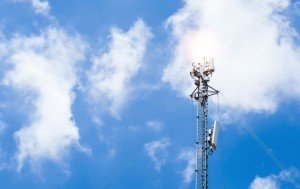Speed Over Safety: The Perilous 5G Network
By Ty Bollinger

Most Americans today are constantly connected to the world of digital information via smartphones and other mobile devices. An estimated 95% own a cell phone of some kind, while 77% own a smartphone – which currently operates on 4G technology.1,2
According to tech experts, at least a hundred telecom operators all over the world are preparing to make the switch to 5G technology, which is expected to be fully rolled out by 2020. It will be needed to run the 28 billion devicesestimated to be online by 2021.2 Before we proceed, let’s understand what all these “Gs” mean and what 5G is designed to do.
What is 5G and What Will It Do?
The “G” in 3G, 4G, and 5G stands for “generation.” The first wireless phone technology marked the appearance of the first generation. Later, 2G started when people were able to send text messages between their phones.
The advent of 3G allowed people to make calls, text, and browse the internet using their phones, while 4G provided faster wireless access and better connectivity. Long-term evolution (LTE) gave 4G even better access and faster speeds.
5G has been designed to vastly expand upon the 4G LTE technology to significantly increase storage capacity, along with boosting connection and browsing speeds.
Currently, wireless companies are mostly still in the testing and prototype stages when it comes to 5G technology. However, 5G is already being rolled out in several test cities, including Sacramento, Washington DC, Atlanta, Dallas, Miami, and New York.3
According to Verizon, when it finally materializes, 5G will provide “about 50 times the throughput of current 4G LTE, latency in the single milliseconds” and will be able to “handle exponentially more Internet-connected devices” which should “accommodate the […] explosion of the Internet of Everything”.2
5G technology is expected to have positive effects on customer support, worker productivity, and product quality. Gamers, who depend on the high-performance connections needed for gaming on mobile networks, are also going to love 5G.
5G is also likely to have a huge impact on the so-called “Internet of Things” – the network of physical devices, vehicles, and home appliances containing the electronics and software that will allow them to efficiently connect with each other, along with collecting and exchanging information.
There is no doubt that when 5G does roll out, it will lead to a dramatic surge in cell phone usage, the number of transmitters, as well as the number and variety of Internet-enabled devices.
This is very exciting from a technological standpoint, but what does 5G mean for our health and wellbeing – especially given that exposure to radiation equivalent to that of a cell phone tower has already been shown to cause cancer in mice in laboratory experiments?4
Let’s look at how 5G will be deployed to understand the effects they are likely to have on our health.
How Will 5G be Deployed?
To enable 5G deployment, wireless providers will use submillimeter and millimeter waves in frequency ranges above 6 GHz to 100 GHz and beyond, so that much more data can be transmitted in the same amount of time.3,5
However, these high-frequency waves can’t carry data very far. To use them, wireless companies will have to build a massive infrastructure of literally thousands of small transmitters to increase signal range and capacity. It is estimated that a transmitter will need to be placed every two to ten homes apart.3
Why should we be concerned about this?
Non-ionizing electromagnetic fields (EMFs) are generated by devices that emit radiofrequency radiation (RF), including cell phones, cordless phones and their base stations, Wi-Fi, broadcast antennas, smart meters, and even baby monitors. Electronic devices and infrastructures used to deliver electricity that generate extremely-low frequency electromagnetic fields also produce EMF.
Proximity to these devices, cell phone towers, and transmitters increases our risk of adverse health effects because of EMF exposure. The massive increase in transmitters required to enable 5G deployment means that it may become impossible to avoid exposure.
 Despite community protests and municipal litigation, many state governments – along with the federal government – want to allow 5G transmitters to be installed in front of homes without the consent of the owners.6
Despite community protests and municipal litigation, many state governments – along with the federal government – want to allow 5G transmitters to be installed in front of homes without the consent of the owners.6
The prospect of so many transmitters emitting radiation has alarmed health experts who are rightly concerned about their potential adverse effects on our health, especially considering the preliminary findings from a federal government study.7
5G Deployment Will Lead to Higher RF Levels than with 3G & 4G
Documents show that companies are aware that deploying 5G will lead to higher levels of harmful radiofrequency radiation in the vicinity of the 5G transmitters, relative to 3G and 4G.8 According to a senior expert in the field of EMF and Health at Ericsson Research, the proposed 5G network roll-out will present difficult challenges – such as more complex EMF compliance assessments and site design requirements, along with larger EMF exclusion zones.8
Countries such as China, India, Poland, Russia, Italy, and Switzerland have lower radiation limits than the U.S. So far, they have refused to allow 5G deployment, as the accompanying increase in radiation levels would exceed those limits.
According to Ericsson, if the national EMF limit for a given country is one-tenth of the international standard limit proposed in 1998 by the International Commission on Non-Ionizing Radiation Protection (ICNIRP)9 the size of the exclusion zone would make the roll-out “very challenging”. If the national limit was one-hundredth that of the ICNIRP limit, the size of the exclusion zone would seemingly make the 5G roll-out “a major problem or impossible”.
Will 5G Affect our Health?
Before we discuss the health ramifications of 5G, consider this: published, peer-reviewed, scientific evidence indicates that even the current wireless technologies of lead to radiofrequency exposures which pose a serious health risk to humans, animals, plants, and the environment.3
For instance, wireless frequencies in the millimeter and submillimeter range have been shown to interact directly with our skin, specifically sweat glands. Our skin is our largest organ. The ICNIRP, while developing recommendations for public exposure limits, appears to be planning to classify our skin as an extremity. In other words, our skin would be categorized as belonging to our limbs rather than head or torso, permitting it to be exposed to more radiation than would otherwise be allowed.3
In her report “A 5G Wireless Future: Will it give us a Smart Nation or Contribute to an Unhealthy One?” Dr. Cindy Russell raises further concerns about the basic safety of currently used wireless technologies.10 She points out that the proposed 5G frequencies have not been tested for short- or long-term safety.
Based on a 1998 review of dozens of studies,11 Dr. Russell’s report explains the science behind electro-sensitivity and the biological harm caused by EMFs. It further details the many adverse effects of 5G’s frequencies – including arrhythmias, heart rate variability, bacterial effects, antibiotic resistance, immune system effects, chromatin effects, teratogenic effects, altered gene expression, and cataracts.10,11
Dr. Russell warns: “The possibility of induction of adverse health effects by a local, low-intensity MMW (millimeter wave) irradiation is of potential significance for setting health and safety standards and requires special attention.”
To protect public health, Dr. Russell recommends the following steps, among others:
- Rolling out 5G technologies only after completion of studies on their health impact
- Creating an independent, multidisciplinary agency to develop safety regulations, premarket testing, and research needs in a transparent environment with public input
- Labeling EMF information on devices along with appropriate precautionary warnings.
EMFs have also been shown to trigger oxidative stress,10 defined as an imbalance between free radicals and reactive oxygen species and their elimination by protective mechanisms, known as antioxidants. This imbalance is known to trigger many acute and chronic diseases.
The World Health Organization (WHO) currently classifies EMFs associated with RF as “possibly carcinogenic to humans”.3,5 However, according to a recent monograph published in the journal Environmental Research, mobile phone use is associated with an increased risk of brain, vestibular nerve, and salivary gland tumors, along with a possible higher risk of breast, testicular, and thyroid cancers.12
Based on this evidence, the authors of the monograph recommend that IARC’s current categorization of RFR as a possible human carcinogen should be upgraded to Carcinogenic to Humans.
EMFs can seriously compromise our health. Unfortunately, because this is the first generation that will be exposed from birth to such high levels of man-made radio frequencies, it will be years or even decades before the full health consequences are known.
For these reasons, many experts strongly recommend that research on the effects of 5G on human health be carried out and existing exposure limits be both re-examined and revised to ensure that both people and the environment are protected.
For instance, Dr. Russell calls the RF wavelengths to which we are currently exposed “a toxin to biological systems”and recommends a moratorium on 5G deployment, along with creating independent health and environmental advisory boards containing members with specific expertise in the biological effects of RF exposure.13
The National Toxicology Program Studies
The FDA nominated the National Toxicology Program (NTP) to study cell phone RF exposure because, as we have already seen, most Americans use them. Further, current safety guidelines seek only to protect users from acute injury because of the heat cell phones generate, while not much is known about the potential health effects of long-term exposure to cell phone radiation. Some human studies have shown limited evidence of an increased risk of cancer from cell phone use.
For these studies, rats were exposed to 2G and 3G frequencies of 900 and 1900 megahertz – which are currently used in voice calls and texting in the U.S. – for a total of just over 9 hours a day, for 10-minute on, 10-minute off increments. Partial findings, reported in May 2016, revealed that the brains and hearts of male rats developed low incidences of tumors.7 Tumors in other locations have been reported in both male and female rats, but these results are not yet considered conclusive.14
 The complete results of these studies, expected later in 2018 or early 2019, will help the federal government better understand the health risks of exposure to cell phone radiation and are likely play an important role in determining future governmental policies regarding cell phone usage safety.
The complete results of these studies, expected later in 2018 or early 2019, will help the federal government better understand the health risks of exposure to cell phone radiation and are likely play an important role in determining future governmental policies regarding cell phone usage safety.
An Extraordinary Appeal
The December 2015 issue of the European Journal of Oncology contains an extraordinary document known as the “International EMF Scientist Appeal”, in which over 240 scientists from 40 nations – who are themselves actively engaged in the study of biological and health effects of non-ionizing EMF – have issued a statement to the effect that that the overall weight of evidence reported in peer-reviewed, scientific studies strongly supports greater precautionary measures be taken to reduce or eliminate exposure.15
This appeal has been submitted to the UN, the WHO, and the UN Environmental Program, and to all UN Member Nations.
The opening paragraph states:
Numerous recent scientific publications have shown that EMF affects living organisms at levels well below most international and national guidelines. Effects include increased cancer risk, cellular stress, increase in harmful free radicals, genetic damages, structural and functional changes of the reproductive system, learning and memory deficits, neurological disorders, and negative impacts on general well-being in humans. Damage goes well beyond the human race, as there is growing evidence of harmful effects to both plant and animal life.”
According to the scientists who drafted this appeal, the agencies responsible for setting safety standards have failed  to create and enforce proper guidelines to protect our health and wellbeing – particularly children, who are more susceptible to EMF.
to create and enforce proper guidelines to protect our health and wellbeing – particularly children, who are more susceptible to EMF.
For instance, in 1998 the ICNIRP published the “Guidelines for Limiting Exposure to Time-Varying Electric, Magnetic, and Electromagnetic Fields (up to 300 GHz)”.9 These guidelines are accepted by the WHO and many countries. In fact, the WHO has called for all nations to adopt these guidelines to encourage global standardization of EMF safety standards.
In 2009, the ICNIRP released a statement saying that it was reaffirming its 1998 guidelines, since apparently the scientific literature published since that time “has provided no evidence of any adverse effects below the basic restrictions and does not necessitate an immediate revision of its guidance on limiting exposure to high frequency electromagnetic fields”.16
Over 240 scientists who signed the appeal disagree strongly with the ICNIRP. They assert that growing scientific evidence contradicts ICNIRP’s claims – in other words, that these guidelines are insufficient to protect public health.
The WHO adopted the IARC classification of extremely low frequency electromagnetic fields in 2002 and RF in 2011. According to this classification, EMF is a possible human carcinogen, as we have noted before. Despite this, the WHO maintains that there is insufficient evidence to justify lowering EMF exposure limits.
The signees of the appeal have recommended that the United Nations Environmental Programme (UNEP) fund an independent multidisciplinary committee to explore alternative options to lower human exposure to RF and extremely low frequency electromagnetic fields.
The signees further state that although it is essential that the industry be involved and cooperate in this process, they should be prevented from influencing its processes or conclusions in any way.
Finally, the signees of this document have also collectively requested that steps be taken to:
- Protect children and pregnant women
- Strengthen guidelines and regulatory standards
- Encourage manufacturers to develop safer technology
- Maintain adequate power quality and ensure proper electrical wiring in utilities responsible for the generation, transmission, distribution, and monitoring of electricity to minimize harmful ground current
- Fully inform the public about the potential health risks from electromagnetic energy and teach harm reduction strategies
- Educate medical professionals about the biological effects of electromagnetic energy and train them to treat patients with electromagnetic sensitivity
- Persuade governments to fund training and research on electromagnetic fields and health independently of industry, while mandating industry cooperation with researchers
- Ensure that media disclose experts’ financial relationships with industry when citing their opinions regarding health and safety aspects of EMF emitting technologies
- Establish radiation-free areas, known as white zones.
What Can You Do to Reduce Your Exposure to EMFs and Dirty Electricity?
As we have seen, many experts are concerned about the health effects of the proposed massive increase in transmitters needed for 5G deployment and are working to protect us from their harmful effects. In the meantime, we need to protect ourselves as much as possible while we wait for existing exposure limits to be revised. Here are a few recommendations for lowering or eliminating exposure to harmful EMFs and dirty electricity:17,18
- Keep all devices in another room at night. Carry them in a bag instead of in clothing
- Try to have phone conversations on a landline instead of putting your cell phone up to your head for long periods of time
- Headphones and chargers can increase EMF exposure from cell phones – so don’t use them while they’re charging
- Avoid traditional headsets. Instead, opt for air tube headsets, which deliver great sound without EMF exposure
- Putting your cell phone on airplane mode stops connectivity with the towers, minimizing radiation exposure
- Get rid of electric blankets, waterbeds, and electric heating pads
- Use a quality shielding phone case that is designed to block various forms of radiation.
- Purchase shielded, grounded extension cords and power cords for home use
- Change your bedroom circuit breaker to exclude smoke detectors, alarms, etc. and then switch off the circuit breaker at night
- Use battery-powered alarm clocks
- Leave at least eight inches of space between your bed and your wall. Wiring (even in walls) can emit a significant magnetic field
- Position your bed so that it’s as far away as possible from strong magnetic field sources, including the utility pole, refrigerator, and home entertainment center
- Forget about Bluetooth headsets. Use speaker mode to keep your phone as far away from your body as possible
- If you’re using a laptop at home, avoid Wi-Fi and opt for hard-wired Ethernet connections
- Purchase a radio frequency meter, which will allow you to pinpoint EMF hotspots
- Reduce or eliminate dimmer switches, wireless products, printers, scanners, computers, television sets, and other energy-saving devices
